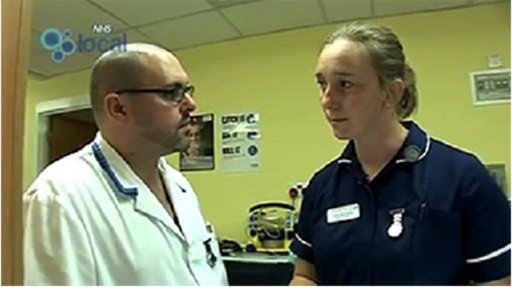4. What makes a good mentor?
Activity 4.1
Think back over your life and identify one or two examples of people who have inspired you. What impact did this person have on you? What were the characteristics of this person? What do you feel you were able to learn from them?
Research involving mentees and mentors has explored and identified various elements that contribute to or undermine successful mentoring relationships.
Activity 4.2
Watch the video below, produced by the NHS local learning platform, which shows two related interactions between an apprentice (Paul) and his mentor (Jane).
As you watch, make a note of the factors that might make a positive impact on their mentoring relationship.

Transcript: NHS. http://www.nationalarchives.gov.uk/doc/open-government-licence/version/3/
Eller et al. (2014) conducted an extensive research study with students and their mentors from various academic disciplines, including natural sciences, nursing/health sciences, engineering, and technology.
As a result of this, it was concluded that the behaviours considered helpful for effective mentoring relationships can be categorised into eight key areas:

Activity 4.3
Now revisit the video clip in the previous activity and identify where you feel each of the components shown above can be observed in this mentoring relationship.
| Key components of an effective mentoring relationship | Observed factors from the video clip |
|---|---|
Open communication and accessibility |
|
Goals and challenges |
|
Passion and inspiration |
|
Caring personal relationship |
|
Mutual respect and trust |
|
Exchange of knowledge |
|
Independence and collaboration |
|
Role modelling |
Feedback
The table below shows some possible observations, but you may have others:
| Key components of an effective mentoring relationship | Observed factors from the video clip |
|---|---|
| Open communication and accessibility | Jane, the mentor, is available throughout the time the student, Paul, is carrying out the observations. Jane encourages open communication by asking how Paul felt the intervention had gone. There is good eye contact between Jane and Paul during the post-observation discussion, and she uses positive prompts such as nodding and smiling. |
| Goals and challenges | Jane sets Paul a new set of goals when she explores with him whether he has sufficient information to make a decision about appropriate pain relief for the patient. She indicates the need to establish the patient’s reported level of pain and to check his wound. |
| Passion and inspiration | Jane highlights her considerable experience as a registered nurse and her real desire, even though it might sound ‘corny’, to inspire her students so that they enjoy nursing as much as she does. |
| Caring personal relationship | Paul is unsure about the best way of managing the second patient’s pain. He has no hesitation in seeking his mentor’s advice, suggesting that he values the relationship and feels supported by it. |
| Mutual respect and trust | Paul appears to be comfortable when discussing aspects of care that he has initially missed. This indicates that he believes Jane will not respond in a punitive way. Instead, she will enable and encourage him to find solutions to his patient’s pain problem. Jane gives Paul pointers as to his next actions, but she trusts him to know how to assess the patient’s pain level and to check his wound. She trusts and respects that he will carry out the interventions correctly. |
| Exchange of knowledge | Jane discusses the process of recording observations with Paul, which enables him to highlight what he knows – for example, the importance of a strong, regular pulse, and that removing the patient’s arm from his sleeve might have been a better alternative. |
| Independence and collaboration | Jane allows Paul to take the blood pressure without interruption, encouraging independence. They work closely together to determine the best approach for managing the second patient’s pain. |
| Role modelling | Jane explains to the first patient that she is there to observe the students, thus role modelling the importance of offering explanations to patients. Paul mirrors the approach by explaining to the patient the outcome of taking his pulse manually. Jane consistently presents herself in a professional manner, both in appearance and behaviour. She demonstrates a calm, assured approach that reassures the students she supports. |
3. Why be a mentor?
